More on Nashville Skyline
The next song, I Threw It All Away, is the album’s piece de resistance. Whereas in To Be Alone with You Dylan plays with clichés in a humorous way, in this song he experiments with how it can be used for serious poetic effect. It has a sonorous melody which holdsits heartfelt sentiments steady, creating a beautiful, shimmering and universally understandable expression of regret. Like the most effective work of the writers in the sentimental tradition, it conveys the feeling that a great deal about the relationship being described is unsaid. Again the lyrics are pointedly sharp and minimal, beginning with the highly conventional lines: …I once held her in my arms/ She said she would always stay… Then there is a twist: …But I was cruel/ I treated her like a fool… The song is perhaps the closest on the album to the work of Hank Williams, in that it uses stripped down language to convey the angst of a failed love with great pathos.
It is in the second and third verses that the song reaches heights of understatement. Dylan’s newly adopted soft crooning voice carries the light irony of the lyrics so well that the modestly expressed statements being presentedcannot fail to capture our sympathy. Both verses begin with a statement, then allow the narrator to make a confession. The second verse begins with the song’s most memorable lines: …Once I had mountains in the palm of my hand/ And rivers that ran through every day… Some commentators have identified these lines as consisting off rather crude sexual imagery. But this is a crass reading. Despite the presence of other songs on the album which play around with innuendo, the combination of humble sincerity and vulnerability in Dylan’s voice makes the simple metaphor is a sincere and touching manifestation of loss. The performance epitomises the way that country music can turn such apparently clichéd imagery into genuinely heartfelt expression. When Dylan follows this with the unfussy confession that …I must have been mad/ I never knew what I had…the tone of regret is genuinely heartbreaking. But the genius of the song is that the singer never sounds in the least depressed. The realisation of his mistakes seems to have made him genuinely open hearted and ready to share what he has learned with his listeners.
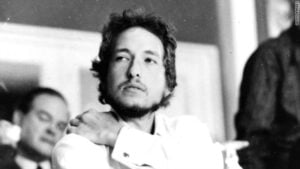
The Reinvention of Cliches in Nashville Skyline
The cliché that opens the third verse, which is sometimes quoted to prove the supposed inanity of these songs, owes much of its effectiveness to the fact that Dylannow appears to indulge himself rather shamelessly in a staple of so many romantic songs: …Love is all there is… he croons …It makes the world go round/ Love and only love, it can’t be denied… But then he steps back a little to deliver the cautionary homily…No matter what you think about it/ You just won’t be able to do without it… Despite the apparent sentimentality of what has been expressed, a universal truth has been movingly conveyed. Love really does ‘make the world go round’. At this moment Dylan’s song writing reaches the point at which he is able to fully embrace elements of the sentimental tradition which have become, perhaps, overstated through repetition, but which convey such essential truths. And there is no doubt that Dylan sounds absolutely sincere here. Yet the lines still contain a certain level of knowing irony, which is reinforced by the folksy conclusion …Take a tip from one who’s tried… Here again, so much appears to be unsaid.
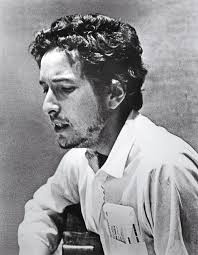
The final verse merely reiterates what has gone before, extending the tone of that last line. The narrator is now giving friendly advice to his audience: …So if you find someone who gives you all of her love/ Take it to your heart, don’t let it stray… This is followed by the delicious wordplay of …One thing for certain/ You will surely be a-hurtin’… The use of the final, deliberately ungrammatical expression, suggests that the narrator is not an educated poet or philosopher but an ‘everyman’ figure who is struggling to find the right words. He bravely shares his naivety and vulnerability with us, admitting his own status as a fallible human being whose judgement does not always help him achieve any kind of wisdom.
I Threw It All Away is in many ways the album’s central statement, demonstrating that Dylan has embraced forms of song writing and poetic expression that he had previously scorned. As well as its obvious expression of romantic regret, it is also the testament of a man who has explored many complex forms of language in his search for universal truths but then finds he can discover such truths in locations that are, in fact, ‘hiding in plain sight’. The song presents the conceit that Dylan has (perhaps rather carelessly) ‘thrown away’ his skill as a poet and is now greatly regretting having done so. It is certainly informed by a profound sense of loss and dislocation. Yet, in ‘throwing away’ obvious poeticisms, Dylan achieves a very meaningful emotional effect. The song is Dylan’s most profound exploration of the pressure that was put on him by the millions of fans who wanted him to be a ‘spokesman’ for their various causes. Here he is taking a deliberate step back and declaring himself to be merely someone who, when it comes down to the nitty gritty, feels exactly what we feel.
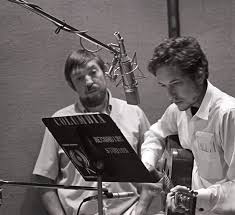
Peggy Day
This is not an easy song to sing, as it requires the singer to convey complex emotions through the medium of simple words. It has therefore, perhaps surprisingly, not inspired a great many cover versions, although Elvis Costello and Nick Cave – both singers whose work acknowledges the considerable poetic power of elements of the sentimental tradition – have produced worthwhile readings. Dylan himself has only played the song around fifty times over many decades, most of which were on the 1976 and 1978 tours. The 1976 version (featured on the live Hard Rain album) is surprisingly raucous, abandoning the original melody and replacing it with a dramatic stop-start rock setting and adapting some of the lyrics. …One thing for sure…he declares loudly …There ain’t no cure/ If you throw it all away… The ‘78 version features a full ‘big band’ arrangement which buries much of the song’s subtlety. By the time he reaches Greenville South Carolina on 13th February 2002, Dylan is delivering a slower, more reflective reading. But this is one of those songs where he always struggles to improve upon the original.
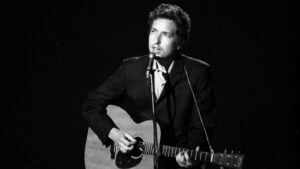
The charming and decidedly lightweight Peggy Day follows. Perhaps the most conventionally ‘country’ number and the slightest of the songs, it has never been performed live. Pete Drake’s steel guitar dominates the sound here. Its lyric is a kind of linguistic game, in which all we really learn about Peggy is her name, with a chorus line that runs …Love to spend a night with Peggy Day… In the second verse this is reversed, rather nonsensically, to …love to spend a day with Peggy night…. The narrator even tells us that he loved her …even before I learned her name… Finally he runs out of ideas. …By golly!.. he exclaims …What more can I say?…The inspiration for the song seems to be Buddy Holly’s famous hit Peggy Sue, whose lyric consists almost entirely of slightly embellished repetition of the girl’s name.
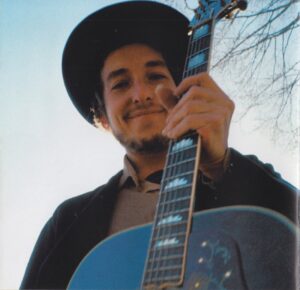
Lay Lady Lay is one of Dylan’s best known songs and was a considerable hit as a single in Britain and the US, so introducing Dylan’s ‘new voice’ to the world. It has become something of a rock standard, with covers by Bryan Adams, Cher, Duran Duran, Richie Havens, Steve Howe and even Neil Diamond.Even the Everly Brothers, who recorded the song in 1984, used a conventional rock backing. Richie Havens and Melanie recorded folkier interpretations. There have been few country style covers. The song’s warm and attractive melody is especially enhanced by Pete Drake’s steel guitar, while Kenny Buttrey supplies a distinctive ‘click track’ drum sound. The song is quite explicitly erotic, more in the manner of a jazz track than a country tune. Much of its effectiveness comes from the narrator’s deliberate distancing of himself from any extreme emotions. The lyric is basically a seductive plea from another shy narrator, slightly reminiscent of the earlier If You Gotta Go, Go Now without the persuasive humour. The song is constructed very much in the manner of a pop hit, beginning, like many early Beatles songs, with a distinctive chorus line: …Lay lady lay, lay across my big brass bed… which recurs after every verse, sometimes contrasted with …Stay lady stay/ Stay with your man awhile.. and …Stay lady stay/ Stay while the night is still ahead… This neat repetition makes the song stick in the mind. The narrator’s seduction technique is certainly unusual: …Whatever colors you have in your mind… he muses …I’ll show them to you and you’ll see them shine…This is, rather surprisingly, a somewhat ‘psychedelic’ line, as if he is promising her some kind of ‘trip’.
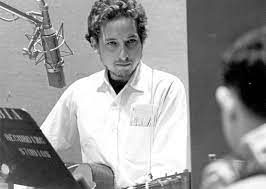
Later he presents himself as an ‘everyday’ working man, telling her that …His clothes are dirty, but his hands are clean… before lapsing into conventional sentiments: …And you’re the best thing that he’s ever seen… The song also a particularly distinctive bridge, in which the narrator gets somewhat bolder, asking …Why wait any longer for the world to begin/ You can have your cake, and eat it too… Here Dylan’s narrator reverses a well known cautionary saying. The following lines: …Why wait any longer for the one you love/ When he’s standing in front of you… make up the focal point of the song. This makes it clear that he is actually already in the bedroom with the woman. It looks very much like the seduction will be successful. Interestingly, however, the song never mentions love, or promises eternal devotion. It is a song purely about desire. In the second bridge we get the plaintive …I long to see you in the morning light/ I long to reach for you… (pause) …in the night… Despite theapparently ‘cheesy’ musical setting, the narrator is being disarmingly honest. He is offering her a ‘good time’… with no strings.

Lay Lady Lay became a staple in many of Dylan’s set lists. On his 1974 ‘comeback’ tour it is given a full rock treatment, distinguished by Robbie Robertson’s unflashy guitar, Garth Hudson’s sweeping organ lines and Dylan’s forceful vocals. The song was also featured in a much changed version in 1976, on the second leg of the Rolling Thunder Tour. By now the narrator’s reticence has completely disappeared. Dylan deliberately pushes the song away from the romanticism of the Skyline version, beginning with the rather shocking …Forget this dance/ Let’s go upstairs!…He tells the woman that she has ‘nothing to prove’, declaring that …It’s all in your eyes/ And the way that you move… The song was played several hundred times on the Never Ending Tour between 1989 and 2010. Dylan reverts to the original lyrics and is often augmented by steel guitars played by Bucky Baxter, Larry Campbell or (later) Donnie Herron. Few of these versions, however, match the original’s blend of slight reticence and gentle persuasiveness.
One More Night, which follows, is perhaps the album’s most underrated song. Dylan played it only once, in Toronto on 6th June 1990, but with guest Ronnie Hawkins on lead vocal. A few relatively obscure artists recorded covers. The lyric is straightforward, expressing a lover’s regret at having lost his girl. It is perhaps the most consciously ‘poetic’ song on the album, using consistent imagery of the moon, the stars, and of wind blowing through trees. The singer begins: …One more night, the stars are in sight/ But tonight I’m as lonesome as can be… which echoes many of Williams’ ‘lonesome’ songs such as I’m So Lonesome I Could Cry, although in such songs the narrative is generally one of despair. Here the music is played in such a jaunty way, and Dylan himself sounds so upbeat, that it is hard to believe that he is really suffering. Some of the phrases he uses add to this impression, delivered as they are with a cool knowingness. …Oh, it’s shameful and it’s sad… he declares …I lost the only pal I had… The reference to the girl as his ‘pal’ is reminiscent other the folksy approach of original country pioneers Jimmy Rodgers. The excuse he delivers: …I just could not be what she wanted me to be… is rather weak and unconvincing. It is hard to believe that he is really suffering.
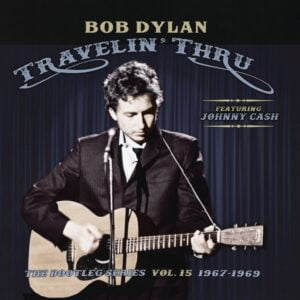
Several of the phrases used in the song are especially distinctive, none more so than when the narrator declares: …I will turn my head up high/ To that dark and rolling sky… which appears to indicate that he is actually feeling pretty good. Even though he informs us that …Tonight no light will shine on me… we are not won over by this doomy statement. Later he says he will …wait for the light/ While the wind blows high above the trees… which does not sound especially unpleasant or painful. The song has another slightly tongue twisting bridge: …I was so mistaken when I thought that she’d be true/ I had no idea what a woman in love would do… Whatever the woman had done to him is not revealed, but he sounds sanguine about it. Dylan sings with a distinctively ironic lilt in his voice throughout, while the musicians respond by keeping the cheery rhythms moving. It is clear that the narrator will soon move on. Despite its subject matter, One More Night is one of Dylan’s most cheerfully uplifting songs.
The same cannot be said for Tell Me That It Isn’t True, in which the lovelorn narrator is highly suspicious of his girl, probably with very good reason. The song is taken at a slower pace, with a mournful melody. Dylan sounds more convincingly lovelorn here, as his paranoia grows. Again, the performance of the musicians is impeccable. The song is embellished by particularly tasteful acoustic guitar and drums. It begins and ends with a short, neat counter melodic musical phrase. ..I have heard rumors all over town… the narrator begins, followed by the rather odd …They say that you’re planning to put me down… (like a dog, perhaps!)… This is followed by the winning refrain …All I would like you to do/ Is tell me that it isn’t true… which is repeated several times without the benefit of any reassurance. The narrator whimpers …They say that you’ve been seen with some other man/ That he’s tall, dark and handsome, and you’re holding his hand…. The use of the cliché ‘tall, dark and handsome’ makes the narrator sound particularly desperate and ‘uncool’. We never learn who ‘they’ are. Perhaps he is imagining all this.
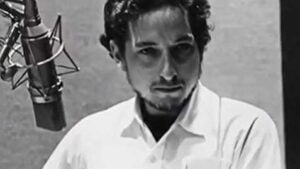
By the end of the song he sounds even more desperate …All of these awful things that I have heard/ I don’t want to believe them, all I want is your word… We may wonder, however, if her ‘word’ will be trustworthy. The song was revived in 2000. It was played 75 times over the next five years with very similar arrangements and with much emotive vocalising. It is perhaps the most emotionally sincere track on the album.
If Tell Me That It Isn’t True is the most direct and sincere song on Nashville Skyline, Country Pie is certainly the funniest. The recording is very short (only one minute and forty seconds) but it is long enough for Dylan to conjure up some wonderfully bizarre images.The song was played regularly in 2000 and 2001 in an extended version. It seems at first as if the ‘country pie’ being referred to may be country music itself, as the song begins …Just like Old Saxophone Joe/ When he’s got the hogshead up on his toe… This conjures up a rather unbelievable image of a drunken musician balancing a large container of alcohol on his feet…Oh me, oh my!… Dylan cries ..Love that country pie!… He then introduces us to a fiddler who ‘plays till the break of day’. This is followed by a detailed list of fruits that may be in such a pie: …Raspberry, strawberry, lemon, and lime/ What do I care?… and then …Blueberry, apple, cherry, pumpkin, and plum/ Call me for dinner, honey, I’ll be there… with Dylan clearly delighting in having to extend the line.
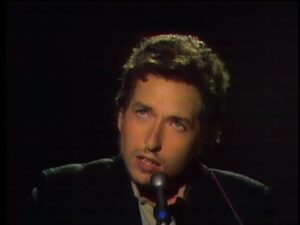
The song then takes a strange turn, as Dylan sings …Saddle me up a big white goose/ Turn me on ‘er and turn her loose… There has been much speculation about these rather surreal lines, which some have interpreted as being about drug use, especially as we get a ‘turn me on’ reference here. Other commentators have seen the song as sexual innuendo, picturing the narrator as being down on his knees ‘eating out’ a woman’s vagina and delighting in the ‘fruits’ within. In the final verse Dylan sings: …Shake me up that old peach tree/ Little Jack Horner got nothin’ on me… ‘’Little Jack Horner’ is a character in a very well known nursery rhyme who ‘eats up all the pies’. It is also slang for a particular sexual act involving the insertion of a thumb into an anus. Such inferences, however, do not necessarily take account of the playfully ambiguous nature of the lyrics. The recording is dominated by tasteful guitar licks and rolling piano, creating another zestful and joyful musical template. Dylan skips through the word play with undisguised glee.
After the uncertainties displayed in the earlier songs, the final track on the album is a deliberate statement of intent. Whereas in earlier country-flavoured songs like One Too Many Mornings or Mama You Been On My Mind his narrators can be found on the open road, moving on from relationships and accepting their fate, Tonight I’ll Be Staying Here With You is a definitive assertion of fidelity and (possibly) of commitment. …Throw my ticket out the window!…The narrator begins …Throw my suitcase out there too!… He indulges in a well worn cliché: …Throw my troubles out the door/ I don’t need them any more… He asserts that his plans for moving on have changed, because leaving …was more than I could do… He now waits for his lover to return, gleefully looking forward to what will presumably be a night of passion. In the bridge section he appears to be giving thanks for his luck at meeting this woman whose ‘love comes on so strong’: …Is it really any wonder… he asks …the love that a stranger might receive… He then indulges in conventional romantic language: …You cast your spell and I went under… could have appeared in any number of sentimental songs. But the triumphant and heavily emphasised …I find it so difficult to leave… is both a confession of love and an admission that, despitebeing attached to the ‘ramblin’ man’ persona so beloved of country and blues singers, he has been ‘bewitched’ by the woman. This is emphasised in the third verse, where he hears the trains moving out but does not board the one he has bought a ticket for. Whether these statements indicate a long term commitment, however, is unclear. The narrator argues that he has been made to stay almost against his will. Maybe that travelin’ urge will reassert itself soon…
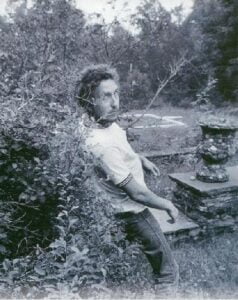
The song has had a long live career, with many versions on the Rolling Thunder tour of 1975-6. It was also performed regularly on the Never Ending Tour between 1990 and 2006 and has been recorded by Tina Turner, Cher, Jeff Beck, Ann Peebles and many others from a range of musical backgrounds. The Rolling Thunder version, which appears on the Bootleg Series release Live 1975 and was recorded at Montreal Forum on 5th December 1975, has a spirited and highly rewritten rock arrangement. As with To Be Alone with You, the song also functions as a message to the audience. In fact the ’75 version seems to be deliberately rewritten with this in mind. It begins …Throw my ticket in the wind/ Throw my mattress out there too!… The second line does not make much sense if he is still singing about a lover. The new lyrics, such as…throw my letters in the sand/ ‘Cause you’ve got to understand… are more sharp edged and defiant than the original. When Dylan sings the cleverly self deprecating …I was feeling a little bit scattered/ And your love was all that mattered… he may well be referring to the love he gets from an audience. In the bridge, the cautious line about ‘casting a spell’ is replaced by a reference to the actual show: …You came down on me like rolling thunder… Naturally this draws a great roar from the crowd. The line …I can hear that lonesome whistle blowin’… (a reference to Hank Williams’ mournful prison song I Heard that Lonesome Whistle Blow, which Dylan recorded during the sessions for his second album) is retained from the original, but now the line about the ‘poor boy on the street’ who the narrator was going to give his seat up for is replaced by …If there’s a traveller on this road/ Then let him have my load… a much more ‘Beat Generation’ type sentiment. As in Tangled up in Blue, Bob is ‘back out on the road’.
Several of the songs on Nashville Skyline have turned out to have a much longer shelf life than might originally have been predicted. This is partly because they are strong melodic compositions with lyrics that can quite easily be changed, reinterpreted or re-presented, often as humorous interludes within Dylan’s live shows. They can also be easily turned into blues, jazz or rock inflected songs. Although it disappointed many at the time, the album is now seen as a highlight of his career – representing a moment in which he was able to throw off yet another facet of his public image and present his credentials as a musician steeped in the culture and style of a form of American music that had previously been regarded as terminally ‘unhip’.
https://www.youtube.com/watch?v=ymY8GJOcB6o
STILL ON THE ROAD – ALL DYLAN’S GIGSWIKIPEDIA
THE CAMBRIDGE BOB DYLAN SOCIETY




Leave a Reply